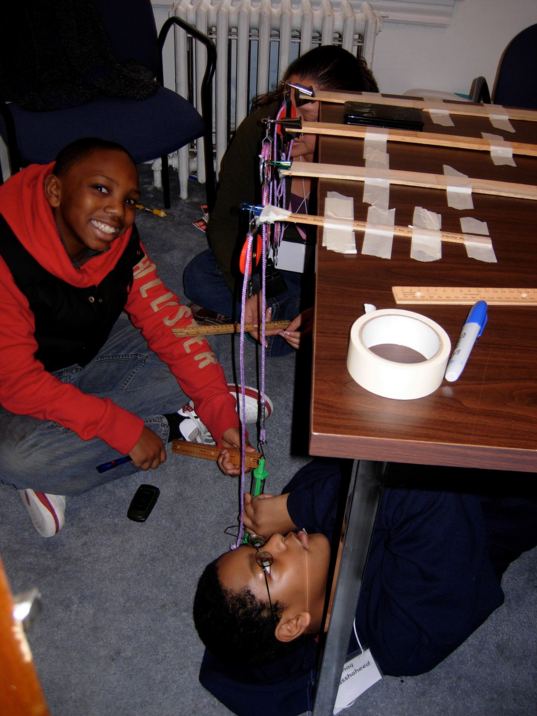Antes de crear un departamento de diseño y desarrollo, la compañía debe establecer de forma clara si existe la necesidad de su existencia; esto implica establecer la pertinencia y su factibilidad técnica y económica. Como se verá más adelante, establecer y mantener un departamento de diseño y desarrollo requiere la inversión de unos recursos que si no son recuperados en el tiempo constituirían una pérdida. Es preciso comentar que dentro de las justificaciones para crear un departamento de diseño y desarrollo, podrían contemplarse el establecimiento de una línea de máquinas propias, es decir diseñadas y construidas para venderlas como un producto de la compañía; también podría venderse el servicio de diseño a los clientes que lo requieran, bien sea para el diseño y construcción de máquinas, para el rediseño de máquinas existentes o para la realización de estudios técnicos y de ingeniería que demanden conocimientos y elementos técnicos especializados (experiencia, software, herramientas).
A pesar que en el apartado introductorio de este libro se mencionó que en los países en vía de desarrollo existe la necesidad de empresas metalmecánicas que presten el servicio de diseño y desarrollo de máquinas para atender las necesidades de las compañías Pymes; la compañía deberá visibilizar cuantitativamente esta necesidad en su sector y región de influencia. Para documentar y sustentar la factibilidad del nuevo departamento, la compañía, en función de los recursos disponibles, puede optar por la realización de un estudio de mercados contratado con una compañía externa y especializada en este tipo de estudios; en el caso de no disponer de muchos recursos, la compañía puede realizar encuestas y entrevistas a sus clientes habituales y a algunos potenciales, evidentemente en este caso los resultados obtenidos no tendrán la amplitud y la calidad de los que se obtendrían con el estudio externo. Una buena opción, si se dispone del tiempo, es acudir a las universidades; es factible que en algunas de ellas existan estudiantes o semilleros de investigación que puedan realizar este estudio; los resultados, en términos de amplitud y calidad, pueden llegar a ser bastante parecidos a los que se lograrían con un estudio contratado, con la ventaja de un bajo costo pero con el inconveniente del tiempo, que en ocasiones puede ser un poco extenso.
Como resultados del estudio, en lo posible, se debe poder establecer de los clientes:
- · Los recursos promedio invertidos en años anteriores, en adquisición de maquinarias o equipos.
- · Los recursos promedio presupuestados a invertir, en adquisición de maquinarias o equipos para el año actual y en lo posible para los próximos años
- · Principales proveedores de maquinaria y equipos; si es posible establecer la participación de cada uno de ellos.
- · Tiempo promedio que les ha tomado todo el proceso de compra, adquisición y puesta en marcha de los equipos y máquinas adquiridas.
- · Tiempo de respuesta y costo de los servicios de posventa prestado por los proveedores de máquinas.
- · Existencia de departamento de diseño y desarrollo en ingeniería.
- · La posibilidad de modificación de máquinas y equipos existentes en sus plantas, para adecuarse a otras condiciones operativas o productos.
- · Interés en el desarrollo de máquinas y equipos específicos o personalizados.
- · Disposición real para el pago del servicio de diseño y desarrollo cuando se requiera.
- · Frecuencia que requieren la realización de análisis de ingeniería y quien los realiza. Costos y tiempos promedio que han requerido estos estudios.
- · Posibilidad real de contratar los servicios de diseño y desarrollo con vuestra compañía.
<!--[if !supportLists]-->
Los resultados obtenidos deben ser analizados por la compañía y, en función de la proyección deseada, establecer la pertinencia o no de la creación del departamento de diseño y desarrollo. Establecida la pertinencia, se continuará con la formalización y normalización del servicio de diseño; sin embargo quiero llamar la atención en que el establecimiento o formalización de diseño y desarrollo no es solo una actividad administrativa, parte de un convencimiento y un compromiso real de la gerencia o dirección y de toda la compañía para su establecimiento, desarrollo y consolidación.
Giovanni Torres



